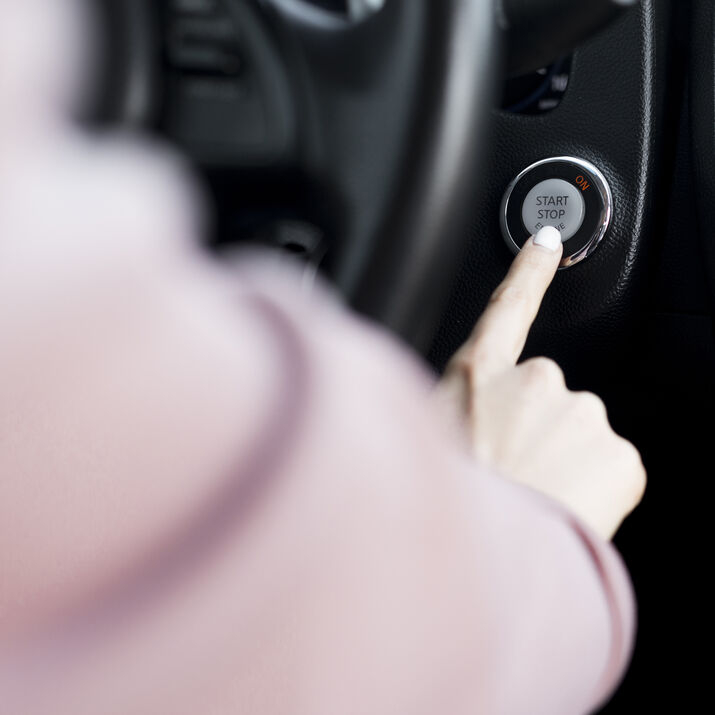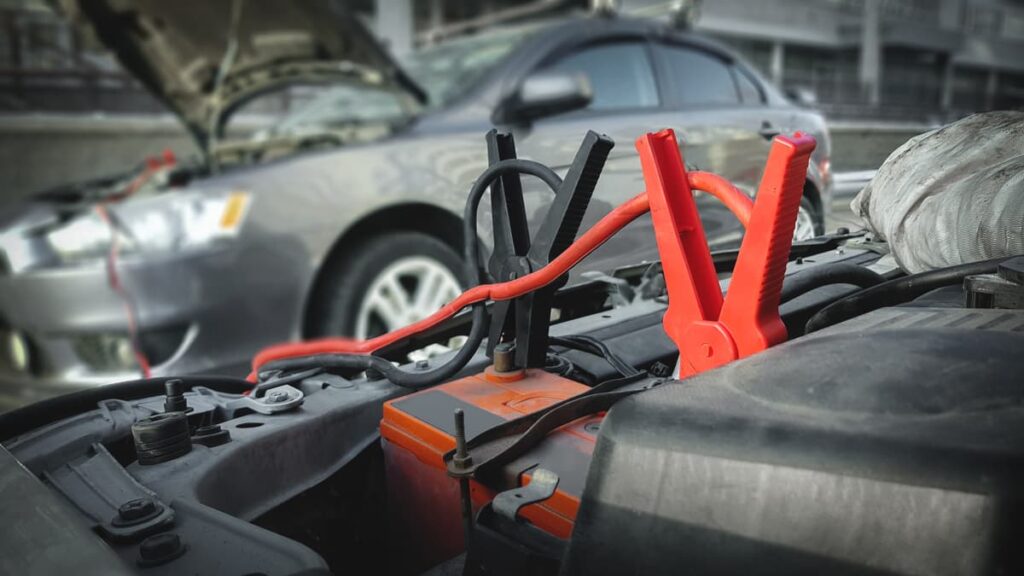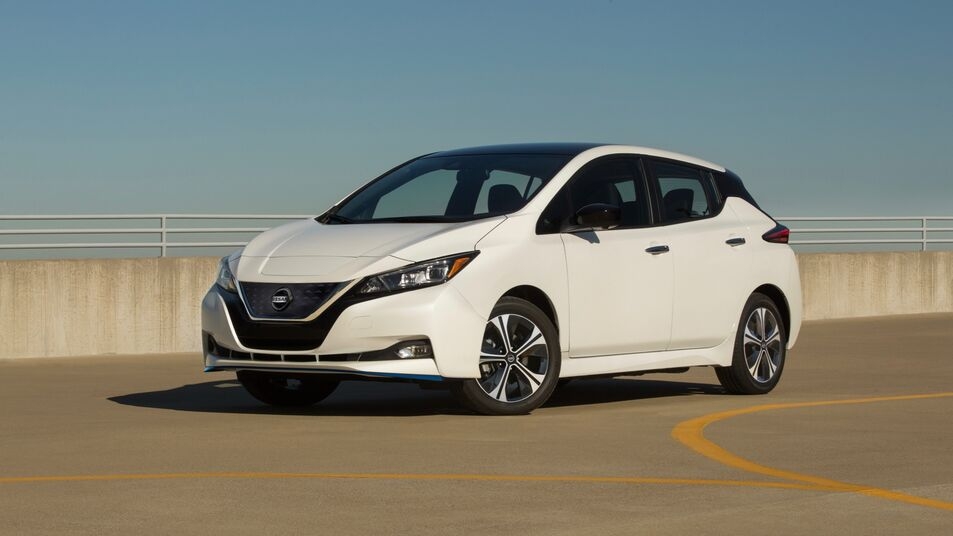Imagine this: you’re all set to head out the door, maybe to school or a friend’s house, but when you turn the ignition key, your car just sits there, silent. You’re stranded, frustrated, and wondering, “Why won’t my car start?” It’s the worst, right? A car that refuses to start can mess up your whole day—think missed appointments, late arrivals, or even a stalled road trip. Knowing what’s going on under the hood matters because it can save you from a big headache (and a bigger repair bill). In this guide, we’re digging into the common reasons your car might let you down, plus some sneaky culprits you might not expect. We’ll cover troubleshooting steps, fixes, and tips to keep your ride running smoothly. Let’s figure this out together!
How a Car Starts – The Basics
Ever thought about what happens when you twist that key or hit the start button? It’s like a mini miracle! Here’s the rundown: the battery sends electrical power to the starter motor, which gets the engine cranking. Meanwhile, the ignition system sparks up to light the fuel, and the fuel system pumps gas from the fuel tank into the engine. When everything clicks, your car roars to life. But if one piece of this puzzle fails? You’re going nowhere fast.
So, what does “won’t start” even mean? There are a few flavors of failure. First, there’s “no crank, no start”—you turn the key, and it’s dead silent, no engine cranks, no dashboard lights, nothing. Then there’s “crank but no start”—the engine turns over with that chugging sound, but it won’t fire up. And finally, “starts then stalls”—it kicks on for a second, then dies. Each one’s a clue to what’s gone wrong under the hood.
Why bother figuring it out? Because nailing down the problem can save you time and cash. A dead battery might just need a quick jump with some jump leads, while a bad starter motor could mean a trip to the auto repair shop. Get this: the AAA says battery trouble is the top reason folks call for roadside assistance—crazy, right? I learned this the hard way once when my car wouldn’t budge in the middle of a snowstorm. Turns out, cold weather had zapped my battery. A neighbor’s help and a warm garage saved the day, but it taught me to keep an eye on the basics.
Common Reasons Why a Car Won’t Start
Now that we’ve got the basics down, let’s dive into why your car might be playing dead. These are the usual suspects, complete with symptoms, causes, and fixes so you can play mechanic (or at least know when to call one).
Dead or Weak Battery
This one’s a classic. A dead battery or weak battery means no juice to get things going. How do you know? You might hear a rapid clicking sound when you turn the key, or see dim dashboard lights—or maybe nothing happens at all. No dome light? That’s a telltale sign too.
What kills a battery? Well, they only last about 3-5 years, so an old one might just be toast. Leaving your lights on overnight can drain it, and cold weather is a battery’s worst enemy—think flat battery on a frosty morning. Sometimes, a sneaky electrical issue like a bad alternator or corroded battery terminals sucks the life out of it too. According to Nationwide Mutual Insurance Company, 1 in 5 cars on the road has a battery over three years old, upping the odds of trouble.
To check it out, grab a multimeter—battery voltage should be 12.6 volts or more. Less than that? It’s probably the culprit. Look at the battery connectors for signs of corrosion (that white, crusty stuff) and clean it with a wire brush if needed. Try a battery jump—if it works, you’re golden. Recharge it by driving around, but if it’s ancient or kaput, get a battery replacement. Weird drains? Might need a pro to sniff out faulty wiring.
Faulty Starter Motor
If the battery’s fine but you’re still stuck, the starter motor might be the bad guy. This little hero turns the engine over, but when it’s faulty, you might hear a single loud click or some strange noises like grinding. Sometimes it won’t crank at all, or it’s hit-or-miss—one day it works, the next it doesn’t.
Wear and tear can wear it out, or maybe the electrical current isn’t flowing right thanks to loose battery cables. A bad starter relay could be in on it too. Tap it lightly with a hammer (old-school trick!), and it might wake up temporarily. But really, you’ll need to replace that faulty starter motor or fix the connections. Trust me, I’d rather swap it out than get stranded again.
Ignition Switch Issues
The ignition switch is like the car’s “on” button. If it’s busted, nothing happens when you turn the ignition key. Maybe the lights flicker on, but no crank—or it starts and stalls right away. A worn-out switch or loose wiring near the fuse box can cause this mess.
Wiggle the key a bit—does it respond? Peek at the steering lock mechanism too; a jammed steering wheel can mess with it. If it’s the switch, replacing it is the fix, though you might need a mechanic’s magic touch.
Fuel System Problems
Here’s a tricky one: the engine cranks but won’t start. Could be the fuel system’s fault—no gas, no go. You might notice it runs rough or stalls fast. Check the fuel gauge first—yep, an empty gas tank happens to the best of us. A clogged fuel filter or a faulty fuel pump can starve the engine too, and bad fuel injectors don’t help.
Turn the key to “on”—hear a quick hum from the fuel pump? No hum, no pump. A strong smell of gas might mean trouble too. Refuel if you’re dry, swap out a dirty fuel filter, or replace the pump if it’s shot. I once ran out of gas a mile from a gas station—pushing a car is no picnic, so keep that tank topped off!
Spark Plug or Ignition Coil Failure
No spark, no start—it’s that simple. Spark plugs and ignition coils make the magic happen in petrol engines. If they’re worn or fouled, the engine cranks but stays dead, or you get misfires if it does kick on. Old spark plugs get gunky, and coils can just give up.
Pull a spark plug—black or crusty? Time for new ones (every 30,000-60,000 miles). Test the coils with a multimeter if you’re handy. Replacing them is pretty straightforward, and I swear by keeping spares in the trunk after a bad spark plug left me stranded on a camping trip.
Less Common Reasons Why a Car Won’t Start
You’ve probably heard of the common reasons like a dead battery or a bad starter motor, but what about the sneaky culprits that don’t get as much attention? These less frequent issues can still leave you scratching your head, asking, “Why won’t my car start?” Let’s dig into some critical but often overlooked problems and how to spot them.
Faulty Alternator
Think the alternator’s just a background player? Think again! It’s the unsung hero that keeps your battery charged and your electrical systems humming. If it goes bad, your car might start after a jump but then die again fast—like, why even bother? Ever seen that little battery symbol light up on your dashboard? That’s a big hint something’s up with the alternator.
- Symptoms:
- Your battery goes flat right after a jump-start with jump leads.
- Dashboard lights flicker or dim, especially that pesky battery indicator light.
- Weird electrical issues, like dome lights fading or the radio acting funky.
- Causes:
- Worn-out parts inside, like brushes or diodes, just giving up.
- A loose or snapped timing belt that’s supposed to spin the alternator.
- Troubleshooting:
- Grab a multimeter and check the alternator’s output—it should be between 13.5 and 14.5 volts. Less than that? Trouble’s brewing.
- Peek at the belt. Any cracks or looseness? That’s your culprit.
- Solutions:
- Swap out the faulty alternator for a new one if it’s not pumping enough electrical current.
- Tighten or replace that bad timing belt to get things spinning again.
Bad Starter Relay
The starter relay is this tiny switch that tells your starter motor, “Hey, get moving!” If it’s busted, you might turn the ignition key and hear nothing but a rapid clicking sound—or worse, total silence. Ever had your car play hard-to-get like that? Want to know more, visit our website…
- Symptoms:
- Just a clicking noise, no engine cranking.
- Sometimes it starts fine, other times it’s like, “Nope, not today!”
- Causes:
- The relay’s worn out from too many starts or electrical breakdowns.
- Corroded battery terminals or connections blocking the power flow.
- Troubleshooting:
- Test the relay with a multimeter—does it click but not work? It’s probably dead.
- Check the battery connectors for signs of corrosion. Green gunk? Bad news.
- Solutions:
- Replace that faulty starter relay with a fresh one.
- Scrub those corroded connections with a wire brush till they shine.
Clogged Air Filter
Who thinks about an air filter when their car won’t start? Not many of us! But this little guy helps your engine breathe, mixing air with fuel for that perfect fuel mixture. If it’s clogged, your engine might crank but refuse to fire up. Sound familiar?
- Symptoms:
- Engine cranks but stays silent—no start.
- If it does start, it sputters or stalls like it’s choking.
- Causes:
- Dirt and debris piling up from skipping routine servicing.
- Dusty roads clogging it faster than you’d expect.
- Troubleshooting:
- Pop the hood and check the air filter. Is it filthy? That’s your issue.
- Look at the air intake—any blockages messing with the flow?
- Solutions:
- Toss that dirty air filter and slap in a new one.
- Clear out any junk in the air intakes to let the engine breathe easy.
Faulty Crankshaft Position Sensor
This mouthful of a part—the crankshaft position sensor—tells your car’s computer when to spark the spark plugs and inject fuel. If it’s on the fritz, your engine might crank all day but never kick into gear. Ever had that sinking feeling when the engine just won’t catch?
- Symptoms:
- Cranks but won’t start, leaving you stranded.
- Random stalls or misfires, even when you’re cruising.
- Causes:
- The sensor’s gone bad from wear or heat damage.
- Wiring to the sensor’s frayed or loose, cutting the signal.
- Troubleshooting:
- Hook up an OBD-II scanner—any codes about the sensor? That’s a telltale sign.
- Check the sensor’s wires for cuts or corrosion.
- Solutions:
- Replace the faulty crankshaft position sensor with a new one.
- Fix up any damaged wiring to get that signal flowing again.
Step-by-Step Troubleshooting Guide
So, your car’s giving you the silent treatment, and you’re wondering, “Why won’t my car start?” Don’t panic! Here’s a practical checklist to play detective and figure it out. Grab your tools, and let’s roll.
- Battery Check
- Test the battery voltage with a multimeter—should be 12.6 volts or more. Less? It’s a weak battery.
- Spot any battery corrosion on the terminals? Scrub it off with a wire brush.
- Try a battery jump with jump leads or an electric jump starter. Did it wake up?
- Starter Motor Test
- Turn the key—hear a clicking sound or strange noises? Could be a bad starter.
- Check the starter motor’s battery cables for looseness or gunk.
- Ignition Switch Inspection
- Do the dashboard lights glow when you turn the ignition key? No? Maybe a bad ignition switch.
- Is the steering wheel locked? Wiggle it and check the steering lock mechanism.
- Fuel System Review
- Peek at the fuel gauge—empty gas tank? Yep, it happens!
- Turn the key to “on”—hear the fuel pump hum? No sound could mean a faulty fuel pump.
- Check the fuel filter for clogs if you’ve got the tools.
- Spark System Evaluation
- Pull a spark plug—is it wet, worn, or covered in grime? Time for a swap.
- Test the ignition coils with a multimeter if you suspect they’re dud.
- Advanced Checks
- Test the alternator output—below 13.5 volts means a dead alternator.
- Check the starter relay for that clicking noise and replace if needed.
- Inspect the air filter—dirty? Swap it out.
- Scan with an OBD-II tool for codes about sensors or the check engine light.
Preventive Maintenance Tips
Why wait for a breakdown? A little TLC can stop that “why won’t my car start” moment before it happens. Here’s how to keep your car happy and humming.
- Battery Care
- Test your 12-volt battery every few months, especially in cold weather when it’s prone to dying.
- Clean dirty battery terminals with a wire brush to dodge electrical issues.
- Use a battery conditioner if your car sits a lot—it’s saved me in winter!
- Routine Servicing
- Stick to the manual’s schedule—replace spark plugs, fuel filters, and belts on time.
- Don’t skip oil changes! Dirty oil is a recipe for engine trouble.
- Fuel Habits
- Keep the fuel tank at least a quarter full to avoid sucking up junk from the bottom.
- Buy from good gas stations—clean fuel keeps those fuel injectors happy.
- Ignition Maintenance
- Swap out spark plugs and ignition coils when they’re due—don’t wait for a misfire.
- Watch for a faulty ignition switch; a sticky key fob battery can hint at trouble.
Real-Life Examples
Cars can be drama queens sometimes, right? One minute they’re purring along, the next they’re refusing to budge. Here are four relatable tales of cars that wouldn’t start—each with a different gremlin under the hood. Maybe you’ve lived one of these yourself. I sure have!
Case 1: Dead Battery from Overnight Lights
Imagine this: it’s a frosty morning, you’re already late, and you hop into your car. You turn the ignition key—nothing. Just a weak clicking sound and dashboard lights so dim they’re basically napping. Sound familiar? This happened to me once when I left the dome light on overnight—oops! That 12-volt battery was toast, drained dry by my forgetfulness.
The fix? A quick battery jump with some jump leads from a neighbor got me going. But here’s the kicker: if your battery’s been around the block (say, over three years), it might be time for a battery replacement. AAA says dead batteries account for over 40% of roadside assistance calls—crazy, right? Check those battery terminals for corrosion too; a wire brush can work wonders if they’re gunky.
Case 2: Grinding Starter Motor
Ever twist the key and hear a noise like someone’s grinding metal in your engine bay? That’s the starter motor throwing a fit. My buddy Mike ignored that telltale grinding sound for weeks, thinking, “Eh, it’ll sort itself out.” Spoiler: it didn’t. One day, his car just gave up—no cranking, no nothing. A tow truck later, the mechanic confirmed a faulty starter motor needed replacing.
If you hear that rapid clicking sound or a full-on grind, don’t wait. It’s a common reason cars won’t start, and a trip to the auto repair shop can save you from being stranded. Pro tip: cold weather can make a bad starter even grumpier, so keep an ear out!
Case 3: Clogged Fuel Filter
This one’s sneaky. My cousin Lisa was cruising on a road trip when her car started acting up—engine cranks, but no start. Or it’d fire up, then stall like it was teasing her. She was stuck miles from a gas station, cursing her luck. Turns out, a clogged fuel filter was starving the engine, blocking fuel from the fuel tank to the spark plugs.
A service center swapped it out, and she was golden. The EPA says a dirty fuel filter can slash fuel efficiency by 10%—not to mention those annoying starting issues. I’d say replace it every 20,000 miles or so. Trust me, your fuel pump and fuel injectors will thank you.
Case 4: Faulty Crankshaft Sensor
Here’s a curveball: the crankshaft position sensor. It’s this tiny gizmo that tells your car’s computer when to zap the spark plugs. If it’s busted, your engine might crank all day but never roar to life. My neighbor had this—his car turned over, but it was like the spark was on vacation. A check engine light popped up, and an OBD-II scan pointed to a defective engine sensor.
A new sensor fixed it, but it’s not a DIY job for most. Heat or bad wiring can fry these, and while it’s not as common as a dead battery, it’s a real pain. Ever had a mystery like this? It’s why I keep a mechanic’s number handy!
When to Call a Professional
Okay, so you’ve poked around—checked the battery cables, listened for strange noises, maybe even kicked the tires in frustration (we’ve all been there). But your car’s still dead. When do you wave the white flag and call a pro? Here’s the scoop.
Signs You Need a Mechanic
- Persistent Issues Post-Troubleshooting: You’ve tried a jump, fiddled with the ignition switch, and still zilch? Could be a bad alternator, a blown fuse in the fuse box, or even a faulty fuel pump. Don’t guess—let someone with the tools figure it out.
- Complex Electrical or Sensor Faults: Electrical issues like a dead alternator or a faulty crankshaft sensor are tricky. Seeing a battery symbol or warning signs on the dash? That’s your car begging for a qualified mechanic. Modern vehicles are like rolling computers—over 30% of repairs now involve electrical systems, per the National Institute for Automotive Service Excellence.
What to Expect at the Shop
When you hit up an automotive repair center, they’ll likely start with a diagnostic scan—think of it as a car doctor’s stethoscope. They might test battery voltage, peek at the timing belt, or check for corroded battery terminals. You’ll get a repair estimate—brace yourself, the average bill’s around $400, says the Bureau of Labor Statistics. But catching a bad starter or faulty ignition switch early can dodge bigger, wallet-busting fixes later. Worth it, in my book!
Conclusion
So, there you have it—a rundown on why your car might refuse to start, from the usual suspects like a flat battery to sneaky culprits like a bad timing belt. We’ve covered real-life fixes (jump leads are your friend!) and prevention tips (keep that fuel filter fresh!). Whether it’s a clicking noise from a bad starter or a fuel gauge acting weird, you’re now armed with know-how.
But here’s the fun part: what’s your car horror story? Ever had a dead car battery at the worst possible time? Drop it in the comments—I’d love to hear! And if this helped you out, why not share it with a pal or subscribe for more? Next time your engine cranks but won’t fire, you’ll be the one laughing—well, maybe after a quick call to roadside assistance. Drive safe, folks!









